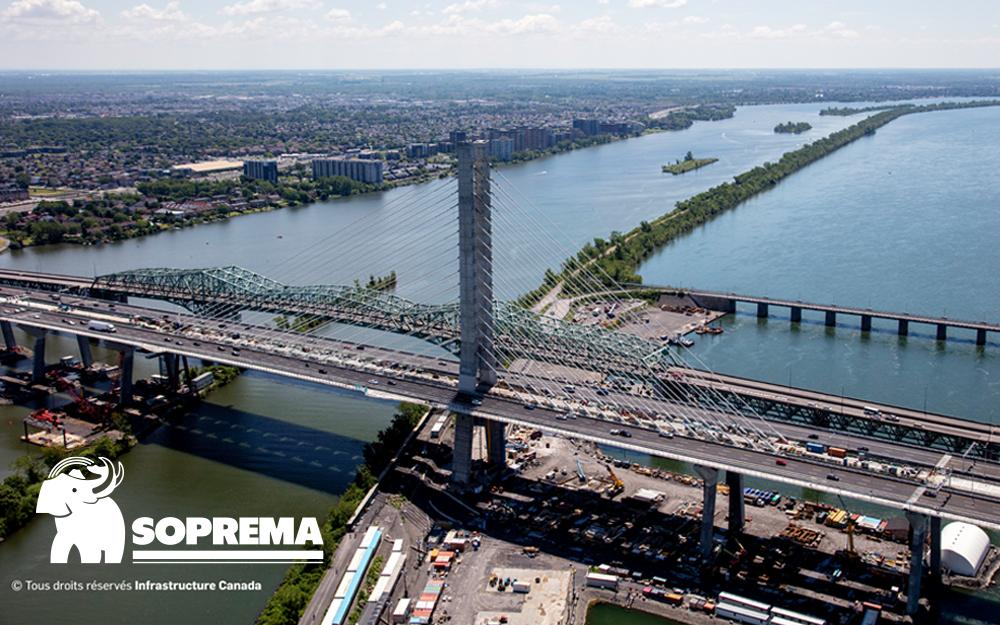
AFTER 53 YEARS OF CONSTANT CROSSINGS, WHICH REPRESENTS ABOUT 50 MILLION VEHICLES A YEAR, AND SEASONAL DE-ICING SALT SPREADING, THE BRIDGE HAD REACHED THE END OF ITS USEFUL LIFE.
Because of weather conditions and time constraints, two different technologies were applied on the 3.4 km structure: heat-welded membranes made of SBS polymer modified bitumen (ANTIROCK line) and polymethyl methacrylate (PMMA) membrane (ALSAN CIVIL line). Snow and rain showers restricted the application of the ANTIROCK products. SOPREMA therefore suggested another technology that was better suited to the site’s weather conditions: ALSAN CIVIL P70 primer and ALSAN CIVIL 773 waterproofing membrane, two PMMAbased products. The liquid membrane, manufactured in Québec, can be sprayed even in cold weather, which considerably speeds up execution. In addition to drying very quickly, it can be applied on irregular surfaces, unlike other technologies.
To view the full case study: https://blog.soprema.ca/en/samuel-de-champlain-bridge-case-study







 make a donation
make a donation

